Driving change

There are plenty of influential South Australians leading their field, but we’ve whittled it down to four we think deserve the spotlight.
We spoke to four South Australians to see how they’re leading their field of expertise.
Scroll down to read all their stories, or click on the name of the influential South Australian you want to find out more about.
- Dr Dhani Dharmaprani – Biomedical Engineer at Flinders University
- Tiahni Adamson – Lead Community Engagement Officer CH4 Global
- Sam Crafter – Chief Executive Officer, Office of Hydrogen Power South Australia
- Aliir Aliir – Port Adelaide footballer
[sc name=”anchor” id=”submit” ]
[sc name=”anchor” id=”Dhani” ]
Matters of the heart
Dr Dhani Dharmaprani
Biomedical Engineer at Flinders University
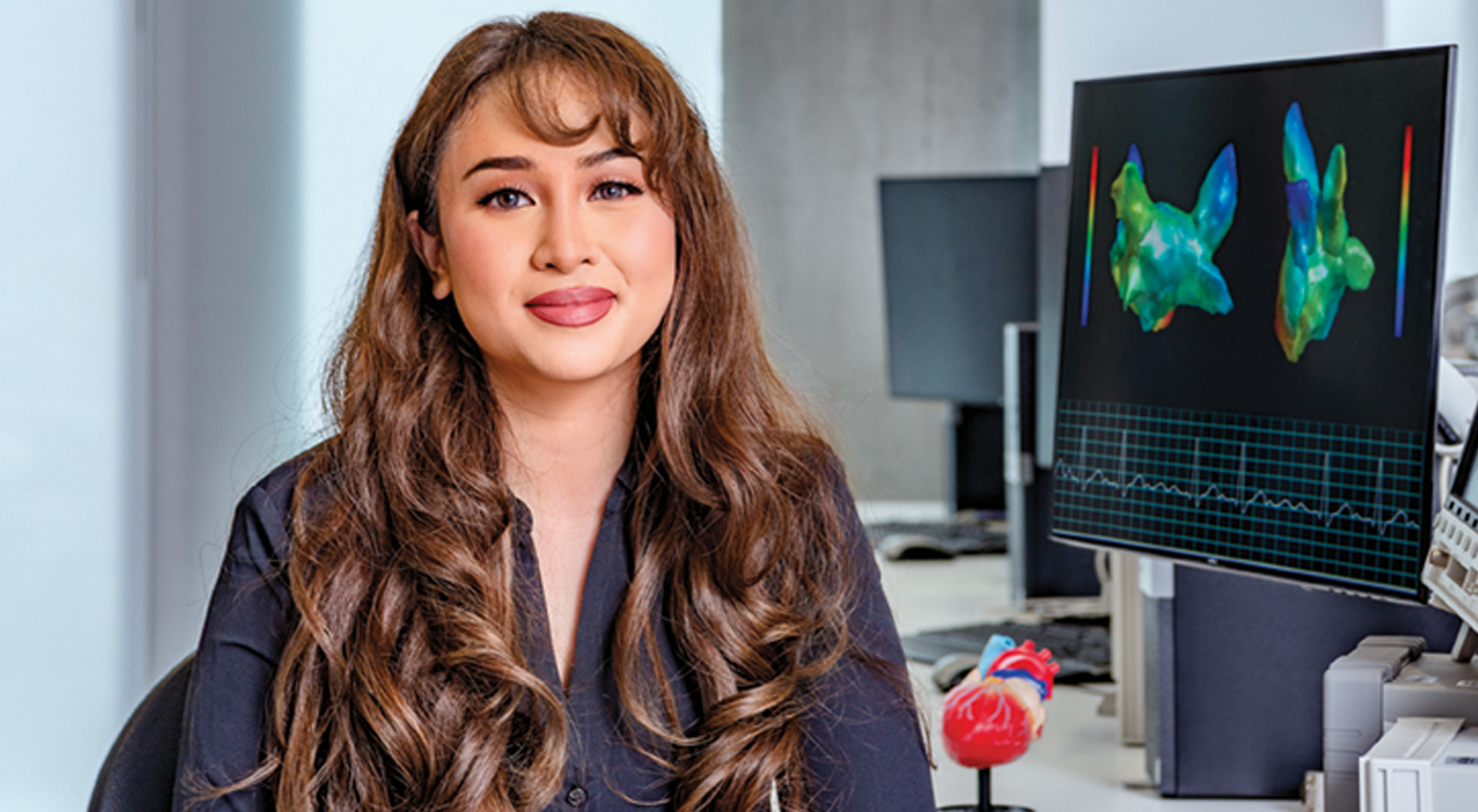
Dr Dhani Dharmaprani is a science, technology, engineering and maths (STEM) trailblazer and is using those skills to change the way we see the heart. The biomedical engineer and postdoctoral research fellow at Flinders University is currently developing technologies to improve cardiovascular health. In the coming months, Dhani will travel to England to continue her research.
sa move: Why did you decide to enter the biotech field?
Dr Dharmaprani: I’ve always wanted to get into medicine. I was specifically drawn to cardiology, because when I was younger, I had a little brother who passed away from a heart condition.
He had a congenital heart defect where he had a hole in his heart. Back then, we were living in Bali and we didn’t have the technology at that time locally to cure the condition. Unfortunately, he wasn’t quite strong enough to go on a flight and get treatment.
I’ve always really liked STEM, and maths and technology as well. So, I think biomed just ended up being a synergistic marriage between all of my interests. And, then it led me here.
sa move: Why should more women get involved in STEM?
Dr Dharmaprani: I’m a huge advocate for trying to show people how diverse STEM careers can be.
We need more diversity in this space, because I think diversity can help breed creativity, new solutions, new ideas, and that’s really important to ensure STEM drives change.
I want to get more women interested in STEM, or just young people in general. I think numbers are dwindling. It’s quite sad, especially because [STEM] can open so many doors, and it’s not always hard hats and doing calculations on a computer.
sa move: How do you want to drive change?
Dr Dharmaprani: I would love to use technology to drive change, because obviously there are so many advancements now in the technological space, and I think we can harness a lot of that to help drive personalised medicine and just better health care for everyone.
So, I think my overall big vision would be to help drive change where we can harness and leverage these technological solutions to improve health.
sa move: What do you love about South Australia?
Dr Dharmaprani: I think Adelaide is such a great place to live. It’s got such good quality of life. We have beaches, we have wineries, we have everything, and it’s just a stone’s throw away. It’s just such a nice environment, and everyone’s so friendly. Since my whole family moved here, we’ve been really blessed by the amount of opportunity that living in SA has afforded us.
[sc name=”anchor” id=”submit” ]
[sc name=”anchor” id=”Tiahni” ]
Seaweed anyone
Tiahni Adamson
Lead Community Engagement Officer CH4 Global
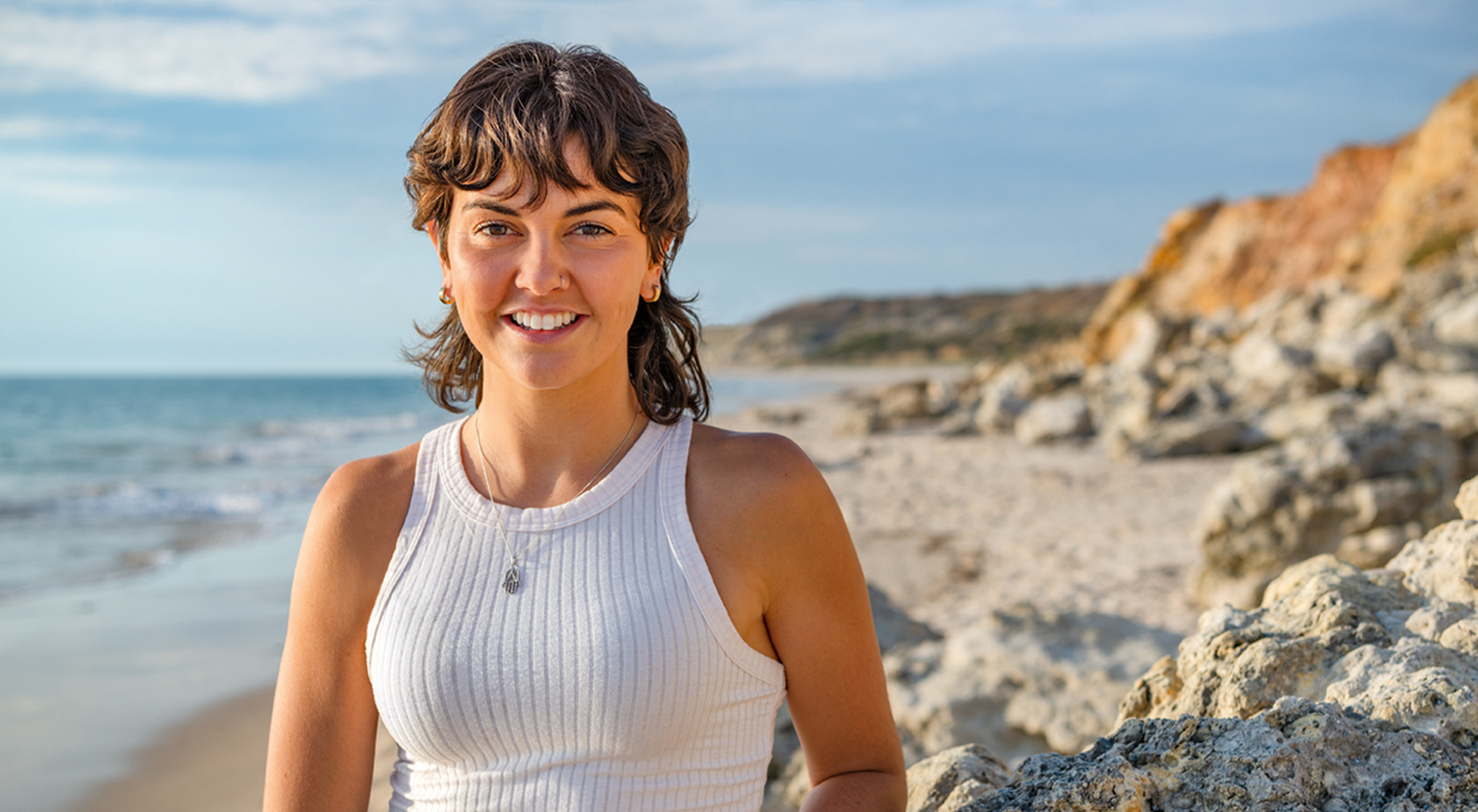
Tiahni Adamson is a Kaurareg First Nations woman and descended from the Torres Strait Islands. She grew up in many Aboriginal communities around Australia, but now resides in South Australia. Tiahni is the Community Engagement Officer at CH4 Global – a climate tech company that works with sustainable agriculture – and she’s found a unique way to feed livestock.
sa move: Can you tell us a little bit about CH4 Global and what you do?
Tiahni: Our mission is to mitigate methane, and to do that, we work with a red macroalgae or seaweed called Asparagopsis. We grow and work on the technology and research of that
macroalgae to put it into livestock feed, which reduces their methane output. It’s really cool technology that’s got massive potential to positively affect climate change.
It was used commercially for the first time in Australia last year, and we had 10 livestock that were produced as low-methane beef.
The biggest challenge is that to feed lots of cattle, you need a lot of seaweed. We’re now working hard to grow as much seaweed as possible to get things off the ground.
sa move: Why did you decide to enter this field of work?
Tiahni: I grew up in lots of different Aboriginal communities all over Australia… and these natural spaces were relatively untouched by human impact. When I came down to the city to do my tertiary education, I realised how much we negatively impact our environment.
Also seeing the first Australian marine extinction in my early 20s – the Derwent sea star – which I got to dive with as a 16 year old.
I think it really hit home, realising the fragility of our ecosystems, and that if we don’t act now and act quickly, we’re going to lose a lot more really fast.
I think it’s an inherent part of being a First Nations person to care for country because we’re not separate from the environment.
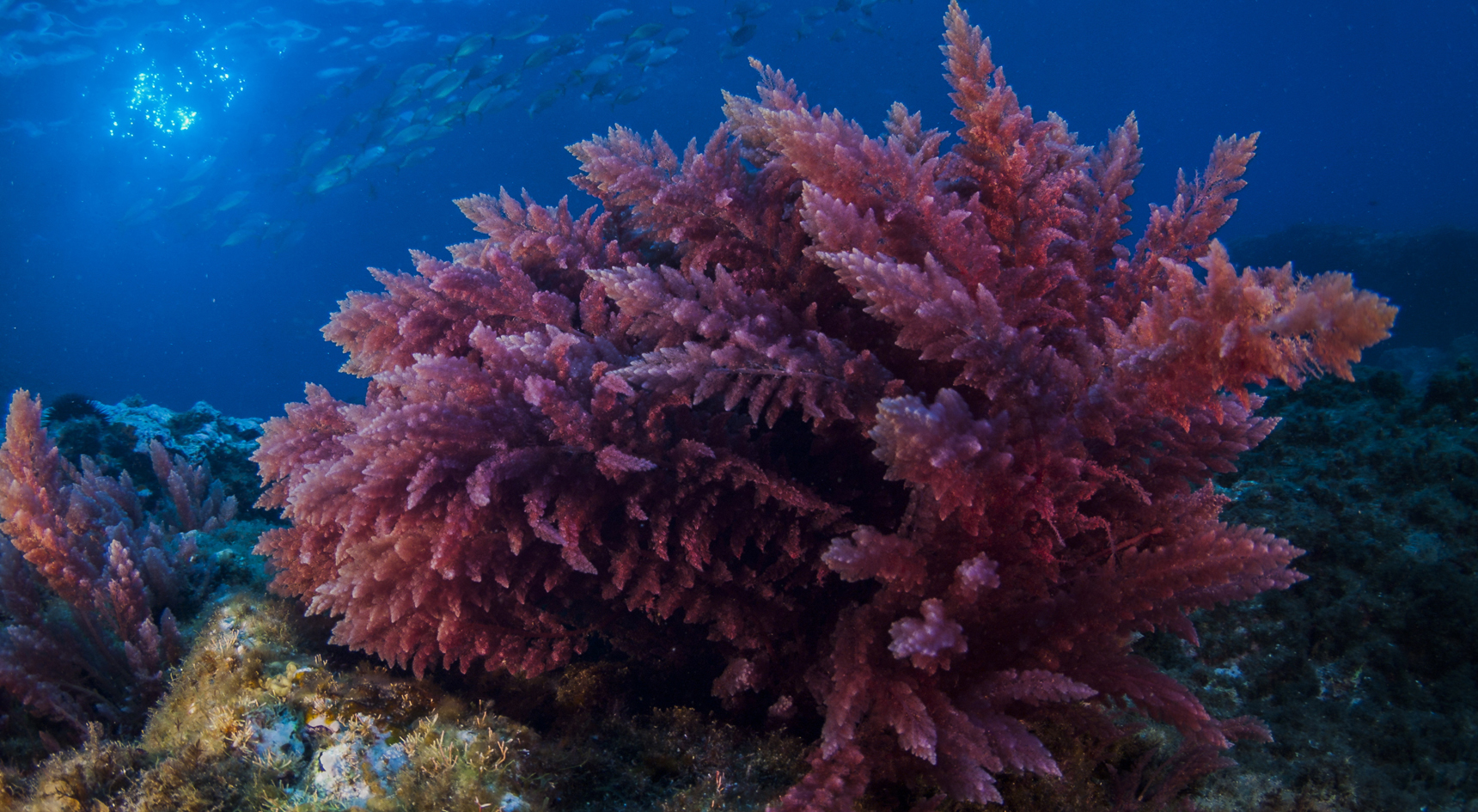
sa move: In terms of climate change and sustainability, where would you like South Australia to be positioned in 10 years?
Tiahni: I think we have great potential. As a wealthy country full of great researchers, scientists and industry, I think we can lead the way in lots of different scopes for climate action. And the seaweed I’m working with is one part of that.
sa move: Where’s your favourite SA travel destination?
Tiahni: I think anywhere along the Fleurieu Peninsula, I absolutely adore. I think going down towards Deep Creek, Rapid Bay, Second Valley, they’re all such beautiful places, with pristine turquoise water.
I think it’s also important to highlight the importance of Aboriginal cultures and the First Nations tourism that exists in South Australia. It’s really special and unique. Mark Koolmatrie, down towards Victor Harbor does cultural tours, and a lot of work looking after country around Port Elliot and Victor.
[sc name=”anchor” id=”submit” ]
[sc name=”anchor” id=”Sam” ]
Our hydrogen future
Sam Crafter
Chief Executive Officer, Office of Hydrogen Power South Australia
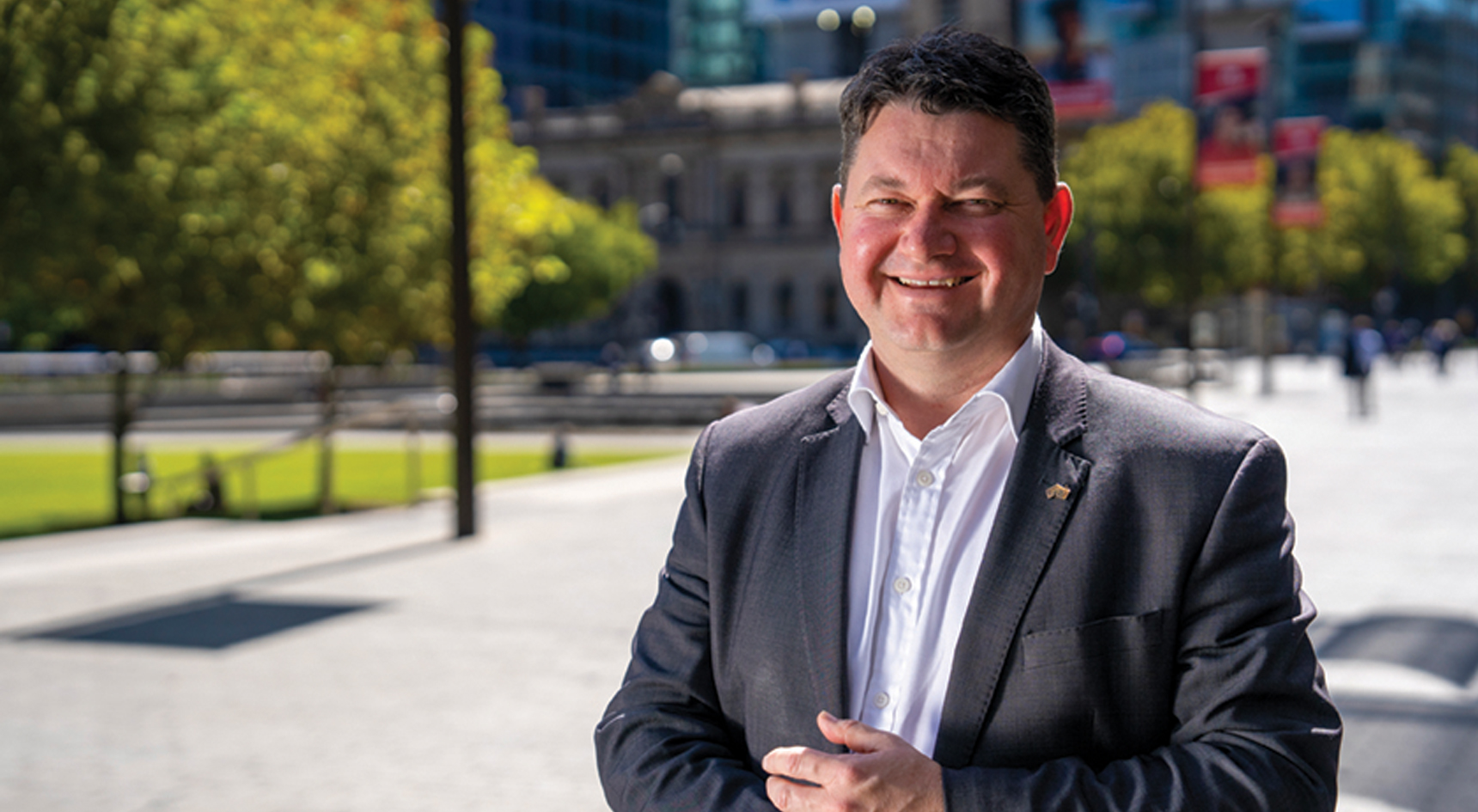
Sam Crafter has worn many hats over the years, working on major gas projects and leading development hydrogen projects in the private sector. But his latest role as the CEO of the Office of Hydrogen Power South Australia is set to be one of his most important.
Sam’s first task in his role will be to oversee the building of a hydrogen power plant in Whyalla. He’ll also help deliver a hydrogen export hub being built in Port Bonython.
sa move: Why is hydrogen power such an important priority in SA?
Sam: I think the huge advantage that South Australia has is that we’ve got some of the best wind and solar resources in the world. We have a lot of them. What hydrogen does – and the products that you can make with hydrogen – means we can take that wind and solar and turn it into things. [We can] then export those products to other places in the world that don’t have that wind and sun renewable resource.
sa move: What inspires you to make sure South Australia is at the forefront of these sort of industries?
Sam: From a personal perspective, I’ve got four children here – three teenage boys and a younger daughter. I really hope they can benefit from South Australia being at the forefront of this renewable energy transition.
I think we can really demonstrate to the world how we can live and drive a renewable and decarbonised future. It’s very important we do that from their perspective as the next generation come through.
sa move: Where do you see South Australia in 10 years’ time? Do you see these industries continuing to grow?
Sam: Yeah, I do. I think there’s a real opportunity as the world becomes more sustainable and looks to decarbonise.
South Australia, with its renewable resources, is going to be able to capture the benefits of having that renewable energy base. I think South Australia can really be at the forefront of that, which is really exciting.
sa move: What makes South Australia such a good place to live?
Sam: I love the fact everybody knows everybody. It’s very well-connected and that makes building relationships and doing business really easy, and a great environment to be able to do that. I also love the fact that everything is still very close, but we have all the benefits of every other city. We’ve got beautiful beaches, the wine districts, and regional South Australia isn’t far away, so it’s easy for us to be able to enjoy the benefits.
[sc name=”anchor” id=”submit” ]
[sc name=”anchor” id=”Aliir” ]
More than footy
Aliir Aliir
Port Adelaide footballer
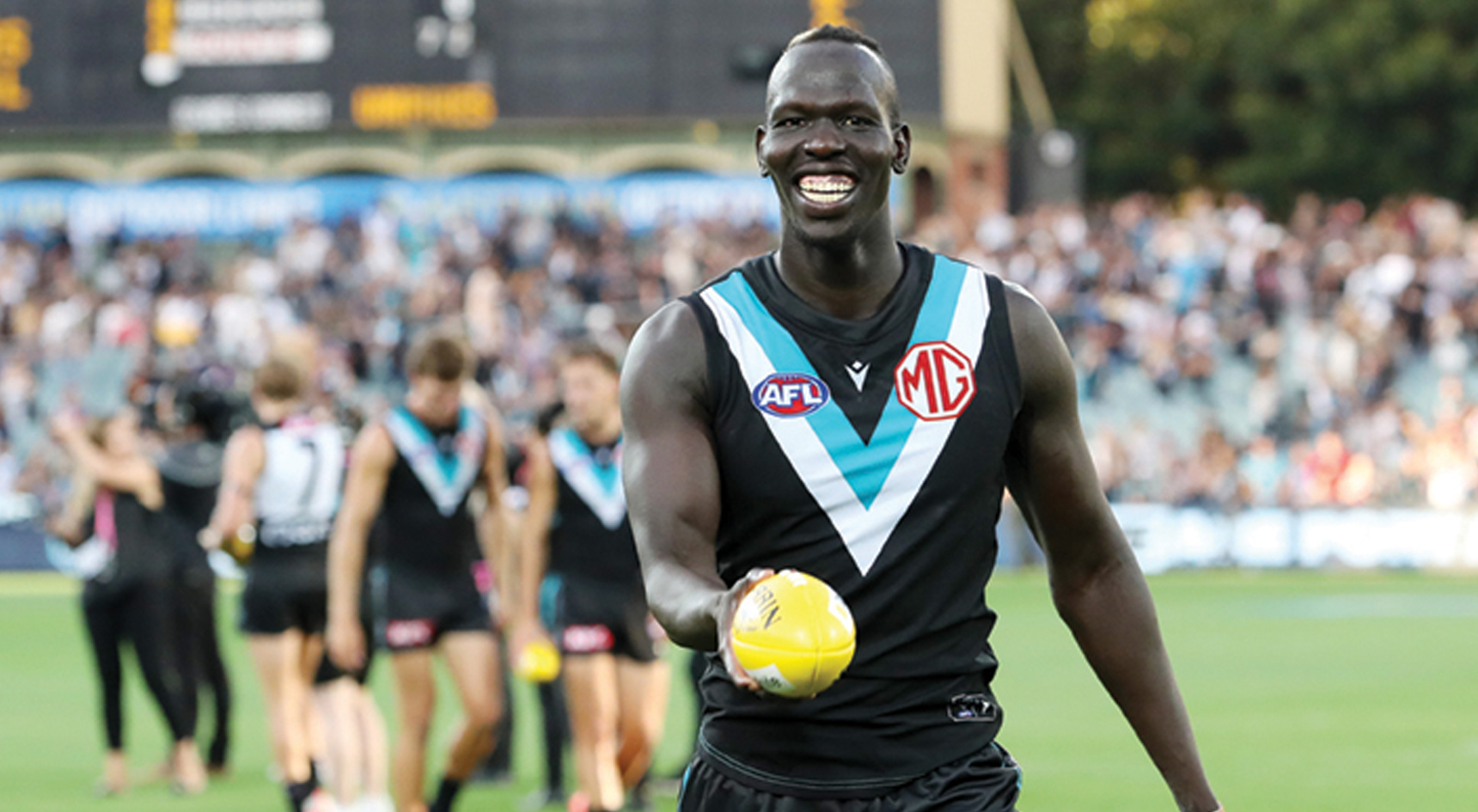
Adelaide Oval couldn’t be further away from Kakuma Refugee Camp in Kenya where Aliir Aliir was born to South Sudanese parents. However the camp was all he knew until he was eight when he moved to Australia with his family. He was drafted by the Sydney Swans in the 2013 AFL draft before making the switch to Port Adelaide in 2021.
sa move: Living in Brisbane – rugby league heartland – why did you choose AFL?
Aliir: I was introduced to AFL by one of my mates – they were playing in the little Auskick game. They must’ve liked my kick and said I should come down to the Aspley Hornets and give it a go. That’s the club I used to live around the corner from, so I thought that’s very convenient so I might as well give it a go. I’ve never really looked back since.
sa move: How does it feel to be a role model to young South Sudanese boys and girls who want to play AFL?
Aliir: I’ve never really seen myself as a role model. I still remember my first year, and kids coming up to me and telling me they look up to me. I wasn’t sure why they looked up to me – I hadn’t done anything. But I guess I thought it’s what comes with the role, and being one of the first Africans drafted, I can understand why. The longer I’ve been in the system, the more I’ve embraced the role.
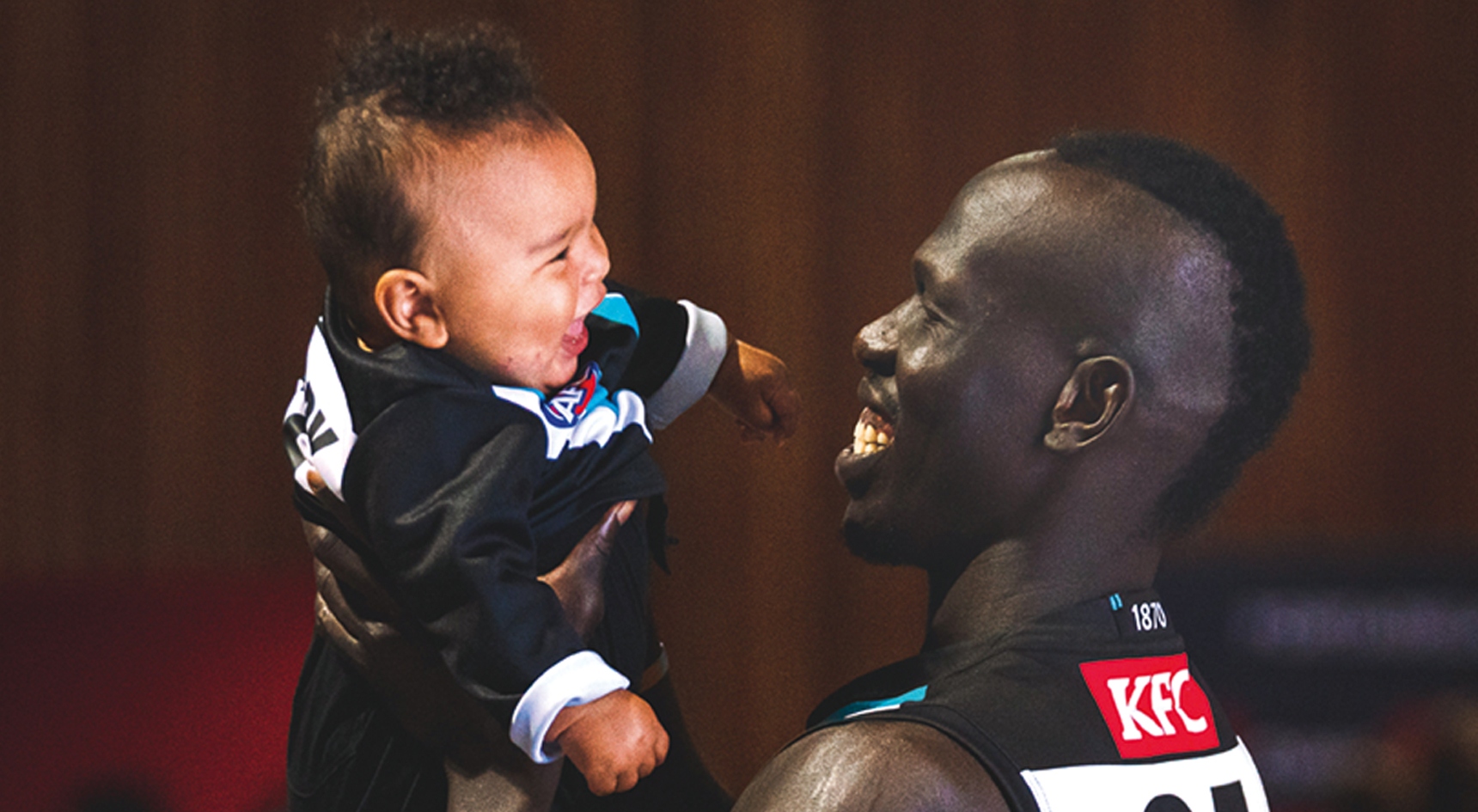
sa move: What type of work have you done in the community?
Aliir: I’m an AFL ambassador, and I’ve been able to do a lot in the community. It’s not necessarily to go there and be like “hey, we want you to play AFL” but more just being a role model to play and guide young Africans whichever way they want to go. If they want to play sport, great, but if they can see someone performing at the top level and doing well, it can motivate them to strive to do their best, whether it’s football or becoming a doctor.
sa move: You’ve been living in South Australia for a few years now. What do you like about our state?
Aliir: I’ve loved SA. When I first came in 2021, we were slowly getting out of COVID, so I’ve slowly started exploring SA. I’ve been to a couple of wineries, and I went to Hahndorf with my partner and son.

